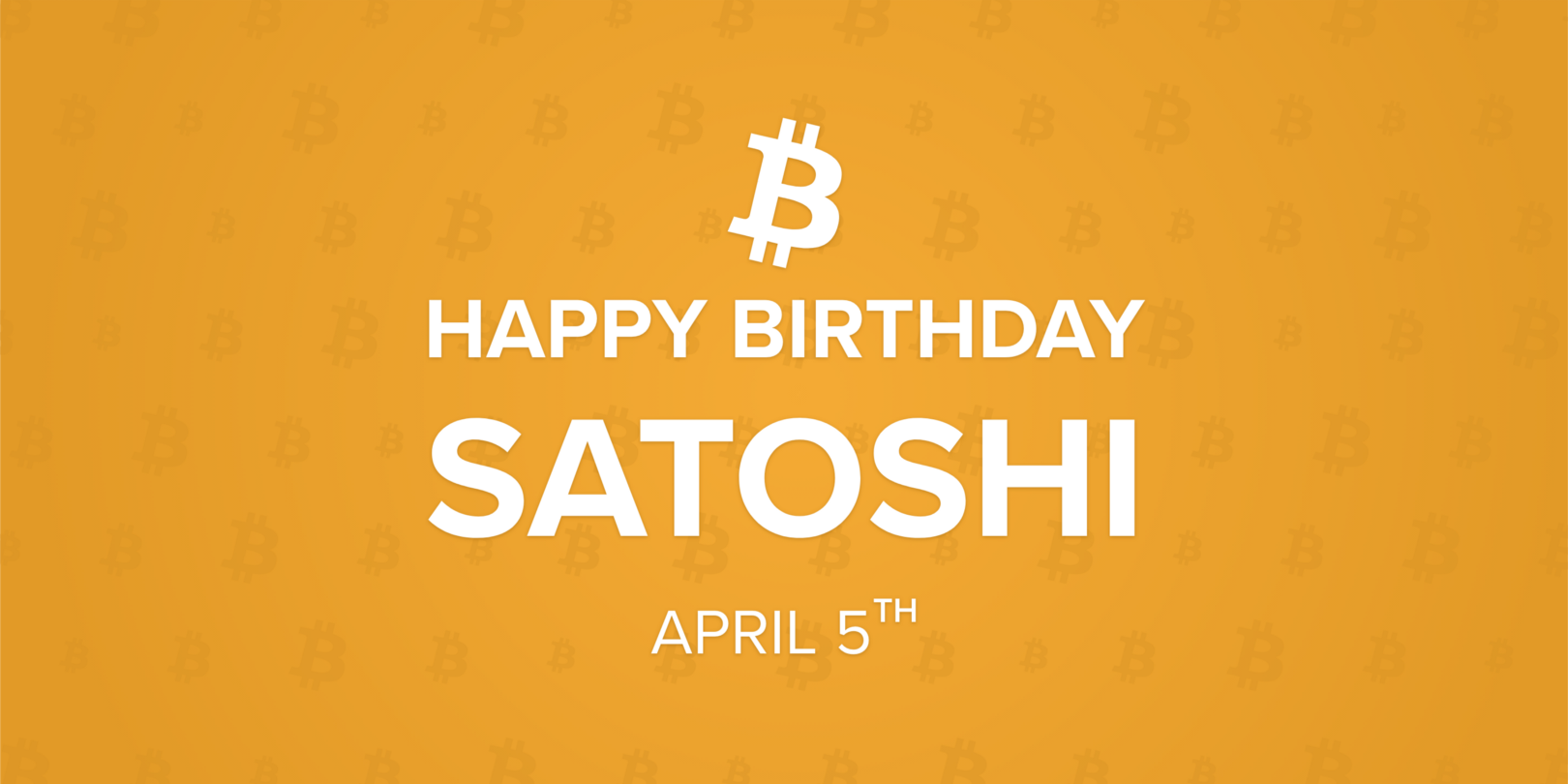Happy Birthday, Satoshi: a Milestone in the History of Money
On Satoshi’s P2P Foundation profile, Satoshi Nakamoto, the pseudonymous creator of Bitcoin, has a listed birthday of April 5, 1975.

On Satoshi’s P2P Foundation profile, Satoshi Nakamoto, the pseudonymous creator of Bitcoin, has a listed birthday of April 5, 1975.
As Gwern explains, April 5 has no outward significance to Satoshi or Bitcoin:
There is, as far as I can tell, nothing special about 5 April; it’s not a round number, it’s not a symbolic date, it’s not your usual fake birthday like 1 January or April Fools, it’s not the day Satoshi signed up for P2P [Foundation] … , it’s not related to when Bitcoin was released (January) or when the domain was registered (August) etc etc. So it seems like a good guess at a birthday.
But the individual or individuals behind the Satoshi Nakamoto identity went to great lengths to remain unidentified, why leak identifying information here?
Upon further investigation, it seems highly probable that Satoshi chose this date symbolically. April 5 happens to be a very important date in the development of money.
The Outlawing of Gold
On April 5, 1933, U.S. President Franklin D. Roosevelt signed Executive Order 6102 “forbidding the Hoarding of gold coin, gold bullion, and gold certificates within the continental United States”. The order declared the act of saving gold a crime in the United States, punishable under a $10,000 fine — almost $200,000 in price-adjusted 2014 dollars — and imprisonable for 5 to 10 years.
Roosevelt’s alleged reasoning for this order is somewhat hard to locate in an intelligible form, but this transcript implies the decree was issued for technocratic reasons– to prop up the US Dollar and reduce demand for gold, which was being withdrawn from federal reserves at an unsustainable rate.
Knowledge of this historical episode can be rather confusing to many people today, as it is difficult to fit into the typical American history narrative. Perhaps this is one of the reasons Executive Order 6102 remains widely unknown amongst the general public.
Criticisms of Executive Order 6102
In the past few decades, mainstream narratives largely brushed over this event. The typical narrative once branded most intellectuals who criticized Roosevelt’s decree as libertarian, but one need not self-identify as libertarian to find Executive Order 6102 extremely concerning.
Progressives familiar with the intellectual theory behind their movement might be uncomfortable with the legal precedent set in creating an imprisonable crime without a democratic process.
Conservatives familiar with the intellectual theory behind their movement may be concerned by the usurpation of a political power not delegated to the Federal government in the US Constitution. Not even the Congress is granted the power to punish for the hoarding of gold; their power for punishment concerning currencies is for fraud (counterfeiting):
To provide for the Punishment of counterfeiting the Securities and current coin of the United States;
Those who adhere to the non-aggression principle (Libertarians) will find this executive order to initiate violence against non-violent parties, without a proper claim to aggressed-property.
And moderates, independents, or otherwise will almost certainly find it disturbingly Orwellian that the leader of an allegedly democratic government can declare a previously legal (and incredibly common) act to be imprisonable for 5 to 10 years, for allegedly technocratic reasons, without any public economic proof or study.
Influence on Bitcoin
Executive Order 6102 was a landmark event in the history of money. It influenced generations of thinkers to consider forms of money not under the control (or potential control) of political entities. Among these thinkers were the Cypherpunks, including Wei Dai (b-money), the very first reference in Satoshi’s original whitepaper.
Why April 5, 1975?
April 5 is clearly an influential date in the development of Bitcoin. Satoshi’s text included in the Bitcoin blockchain’s genesis block even seems to resonate with a fitting message:
The Times 03/Jan/2009 Chancellor on brink of second bailout for banks
Interestingly, Satoshi’s reported birth year, 1975, also seems to have relevant significance. As Edlund10 points out, 1975 is the year Executive Order 6102 was reversed and gold ownership was re-legalized for average US residents.
TL;DR
Satoshi Nakamoto’s self-reported birthday is April 5, 1975. This date happens to correspond to the date of a major turning point in the development of Bitcoin. Executive Order 6102 — a decree making the holding of gold an imprisonable offense in the US — was issued on April 5, 1933. In a seemingly corroborating nod, 1975 is the year in which this act was reversed.
It seems extremely unlikely that Satoshi chose April 5, 1975 by coincidence.
This article was originally posted April 5, 2014 at jason.dreyzehner.com.